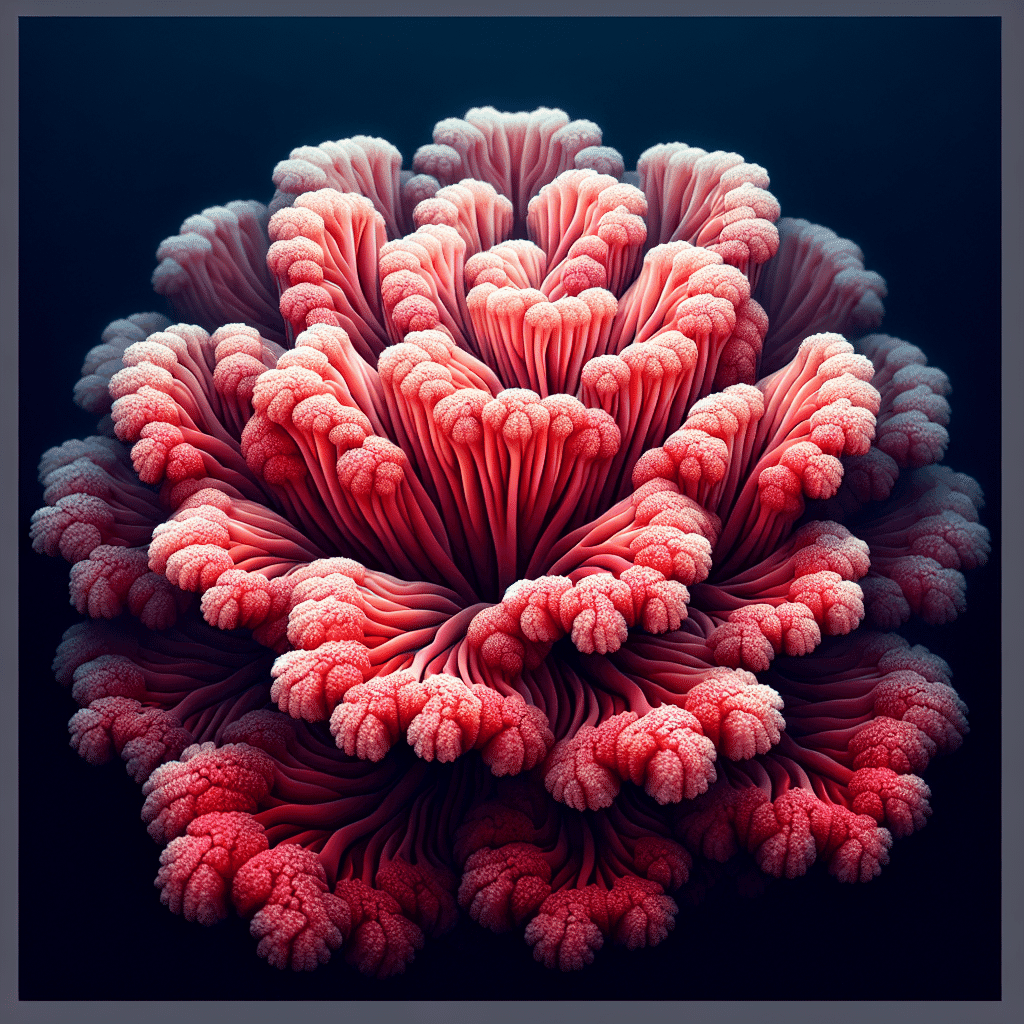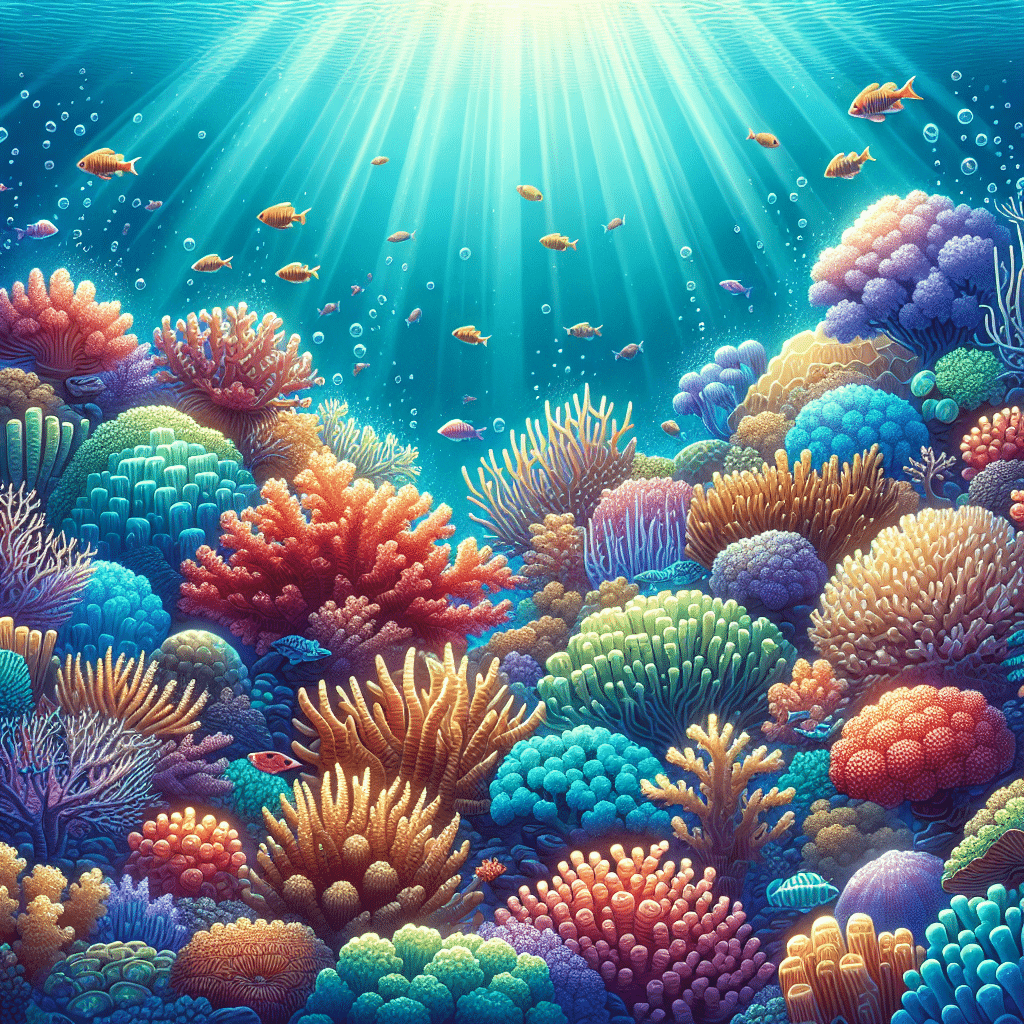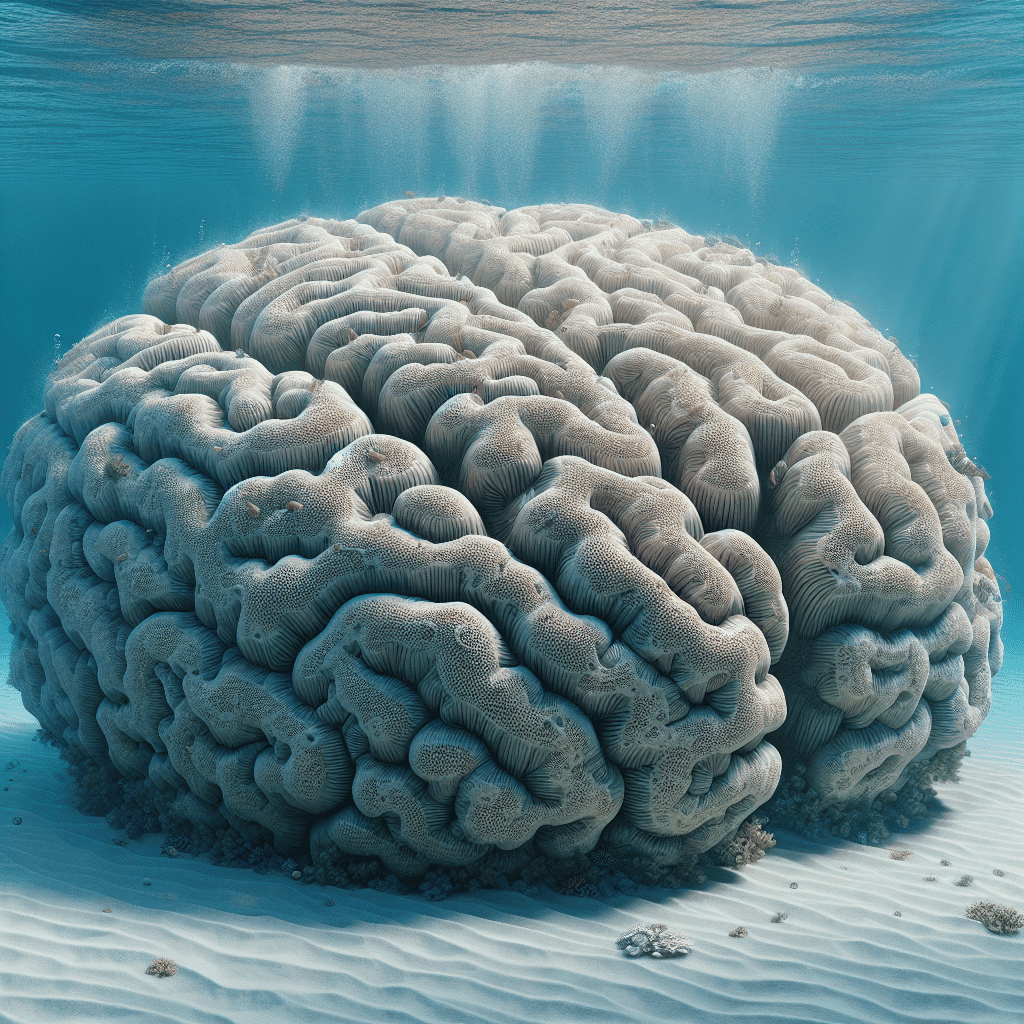Understanding Carnation Coral
Introduction to Carnation Coral
Carnation coral, often referred to as Cauliflower Coral or Tree Coral, is a fascinating species that I find particularly captivating. It thrives in the tropical Pacific and Indian Oceans, where it typically attaches itself to caves, dimly lit areas of reefs, or ledges. There are over 250 members of the Dendronephthya species, and carnation coral is known for its vibrant colors, most commonly red or orange (TheSea.Org). This soft coral has a unique structure; its body tissue contains calcareous spicules that help maintain its form, and it boasts numerous tentacles, each with eight polyps.
Importance of Carnation Coral
The significance of carnation coral extends beyond its striking appearance. Coral reefs, including those with carnation coral, are critical ecosystems that support approximately 25% of all ocean life. These reefs contribute enormously to our economy, generating about $10 trillion globally and over $3 billion domestically each year. They provide food, livelihoods, and cultural practices for hundreds of millions of people (NOAA Fisheries).
In addition to their economic value, carnation coral and other coral species play a vital role in marine biodiversity. They create habitats for countless marine organisms, and their health reflects the overall well-being of the ocean environment. However, these corals face threats from various predators and environmental changes, making their conservation essential for maintaining the balance of marine ecosystems. If you’re looking to enhance your reef tank with beautiful and vibrant corals, considering carnation coral is a step in the right direction. For more information about different coral types, check out our articles on brain coral, mushroom coral, and torch coral.
Threats to Carnation Coral
Understanding the threats to carnation coral is crucial for anyone interested in maintaining a healthy reef tank. Two primary concerns are the Stony Coral Tissue Loss Disease and natural predators that can significantly impact the health of these corals.
Stony Coral Tissue Loss Disease
Stony Coral Tissue Loss Disease (SCTLD) is a severe and rapidly spreading disease that was first identified in the Florida Keys in 2014. Since then, it has quickly moved throughout the Caribbean, affecting many coral species, including carnation coral. This disease is one of the most lethal coral diseases ever recorded, causing significant tissue loss and ultimately leading to coral death if not addressed.
The symptoms often start with lesions appearing on the coral’s surface, which can lead to rapid decline. It’s essential for hobbyists to monitor their tanks for signs of SCTLD, especially if they are sourcing corals from areas known to be affected.
Natural Predators of Carnation Coral
Carnation coral, like many other corals, faces threats from various natural predators. These include fish, marine worms, barnacles, crabs, snails, and sea stars. In severe cases, high populations of these predators can devastate entire reefs.
For those of us with reef tanks, it’s vital to be aware of the types of fish and invertebrates we introduce into our tanks, as some of them may prey on our beloved corals. Here’s a brief overview of some common predators and their potential impact:
| Predator Type | Potential Impact |
|---|---|
| Fish | Grazing on coral tissue |
| Marine Worms | Boring into coral structures |
| Barnacles | Competing for space and nutrients |
| Crabs | Feeding on coral polyps |
| Snails | Scraping coral surfaces |
| Sea Stars | Predation on coral colonies |
By understanding these threats, I can better protect my carnation coral and maintain a thriving reef tank. Regular observation and proper tank management practices are key to ensuring the health of my corals. For more information on coral care and species, check out our articles on brain coral and torch coral.
Conservation Efforts for Corals
As I dive into the world of corals, I find it fascinating how crucial they are not just for marine life but also for humans. The conservation of corals, especially the carnation coral, plays a significant role in maintaining the health of our oceans and the economy.
Economic Value of Corals
Corals are incredibly valuable, contributing about $10 trillion a year globally. They provide over $3 billion a year domestically to the economy. Hundreds of millions of people rely on coral reefs for food, livelihoods, cultural practices, and various economic benefits (NOAA Fisheries). This economic significance highlights the need for effective conservation efforts to protect these vital ecosystems.
| Economic Contribution | Amount |
|---|---|
| Global Contribution | $10 trillion/year |
| Domestic Contribution | $3 billion/year |
Restoration Initiatives for Coral Reefs
Numerous organizations and initiatives are dedicated to restoring coral reefs. NOAA plays a key role by facilitating, leading, funding, and implementing efforts to grow corals in protected conditions. They have over 20 active coral nurseries throughout the Caribbean, providing more than 40,000 healthy corals for reef restoration each year.
One remarkable initiative is Mission: Iconic Reefs, which aims to restore coral cover across seven ecologically and culturally significant sites in the Florida Keys National Marine Sanctuary. The goal is to increase coral cover from 2 percent to an average of 25 percent by the end of the project.
Additionally, the Coral Gardeners project has successfully revitalized nearly 40,000 coral fragments in Moorea, with an ambitious goal to reach one million corals by 2025. This initiative focuses on local farming due to restrictions on coral export across national borders.
Another significant player in coral restoration is the Coral Restoration Foundation™ (CRF), which operates as the world’s largest nonprofit marine conservation organization dedicated to restoring healthy coral reefs. They use unique Coral Trees—meter-long tree-like structures made of plastic—to establish nurseries with over 500 coral trees off the coast of Florida, focusing on reforestation, education, and knowledge sharing to conserve reefs (GOOD Search).
These efforts illustrate the importance of collaboration and innovation in restoring coral reefs and ensuring the survival of species like carnation coral. By participating in or supporting these initiatives, I can contribute to the broader goal of coral conservation and help preserve these beautiful underwater ecosystems. For more information on different types of corals, check out our articles on brain coral, mushroom coral, and torch coral.
Carnation Coral Habitat
Ideal Environmental Conditions
Carnation coral thrives in clear, shallow, tropical waters close to the surface. These environments are essential for their growth and survival as they benefit from areas with waves that help deliver food, nutrients, and oxygen. The structure of coral reefs, where carnation coral can often be found, provides a stable habitat. These reefs are among the world’s oldest living ecosystems and were primarily formed after the last ice age, approximately 100,000 years ago.
| Environmental Factor | Ideal Condition |
|---|---|
| Water Clarity | High |
| Water Depth | Shallow |
| Water Temperature | Warm (around 77°F to 84°F) |
| Light Availability | High |
| Wave Action | Moderate to strong |
Geographic Origin of Carnation Coral
Carnation coral, also known as Cauliflower Coral or Tree Coral, originates from the tropical Pacific and Indian Oceans. It typically attaches itself to caves, poorly lit areas of reefs, or on the ledges of reefs. This species is part of the Dendronephthya family, which includes over 250 members, and is known for its vibrant colors, usually found in shades of red, orange, pink, and lavender.
Carnation corals can grow into highly branched structures reaching up to a meter in height, making them a stunning addition to any reef tank. If you’re interested in incorporating these beautiful corals into your setup, ensure that the habitat mimics their natural environment as closely as possible. For more information about suitable corals for your tank, check out our article on corals.
Physical Characteristics of Carnation Coral
Soft Nature of Carnation Coral
Carnation coral is unique because it is soft in nature, unlike hard corals such as brain coral or elkhorn coral. This softness comes from its structure, which includes a body tissue that contains calcareous spicules. These spicules help maintain the coral’s shape and support its growth. It’s important to note that carnation coral does not contain the symbiotic algae zooxanthellae that many other coral types rely on for energy.
The soft nature of carnation coral allows it to sway gently in the water, which is quite beautiful to observe in a reef tank. With many tentacles and each having eight polyps, this coral can create a stunning visual effect.
Appearance and Color Variations
Carnation coral is known for its vibrant and rich pigmentation. It can exhibit a variety of colors, including pink, orange, and lavender. These colors make it a popular choice for hobbyists looking to add beauty to their reef tanks. The highly branched structures can reach up to a meter in height, making them a striking centerpiece in any aquarium.
Here’s a quick overview of the typical colors found in carnation coral:
| Color Variation | Description |
|---|---|
| Pink | Soft, warm tones that brighten the tank |
| Orange | Vibrant and eye-catching, great for contrast |
| Lavender | Adds a soft, calming effect |
Carnation coral’s unique appearance and soft structure make it an appealing option for those wanting to enhance their aquarium’s aesthetic. For more information on different types of corals, check out our articles on xenia, mushroom coral, and torch coral.
Feeding Requirements of Carnation Coral
Carnation Coral’s Diet
I find that understanding the feeding requirements of carnation coral is essential for keeping it healthy in a reef tank. These corals primarily feed on a variety of tiny organic particulates, including phytoplankton, bacteria, protozoa, and zooplankton, particularly copepod nauplii. They utilize their delicate tentacles and a thick mucus layer to capture these food particles, with phytoplankton being a significant part of their diet.
For optimal health, it’s important to maintain the right food densities and flow rates. Research indicates that carnation corals thrive best with a steady cell count of 5,000-50,000 phytoplankton per cubic milliliter in the water. Additionally, a naturalistic alternating laminar flow pattern is recommended to support their feeding.
| Food Type | Description |
|---|---|
| Phytoplankton | Tiny plant-like organisms, essential for diet |
| Live Baby Brine Shrimp | Nutrient-rich food for growth and vitality |
| Micro-Plankton | Small food particles designed for invertebrates |
| Copepod Nauplii | Zooplankton that provides essential nutrients |
Feeding Tips for Carnation Coral
Feeding carnation coral can be a bit challenging, but I’ve learned a few tips that can help ensure success. First, it’s crucial to provide a varied diet that includes live baby brine shrimp and micro-plankton. These foods are vital for their survival and growth in a reef aquarium. However, it’s important to note that carnation coral is recommended for only the most expert reef keepers, as constant availability of these foods is necessary.
Here are some tips I’ve gathered for feeding carnation coral:
- Frequent Feedings: Feed your coral multiple times a day to simulate natural feeding conditions.
- Use a Feeding Tube: A feeding tube can help direct food to the coral without disturbing the tank too much.
- Monitor Water Quality: Keep an eye on water parameters, as uneaten food can affect water quality.
- Maintain Flow Rates: Ensure that the water flow is moderate to help disperse food particles effectively.
- Observe Health: Regularly check the coral’s health and adjust feeding amounts as necessary.
Caring for carnation coral requires dedication and a keen eye to notice changes in their well-being. Providing high-quality nutrients in a stable environment will significantly contribute to their health and longevity.
Care and Maintenance of Carnation Coral
Caring for carnation coral can be quite the adventure. It’s not just about putting it in the tank and hoping for the best. I’ve learned that this coral species requires a good deal of attention and specialized care to thrive.
Expert Care Tips
Experienced Keepers Only: Carnation coral should ideally be cared for by dedicated and experienced reef keepers. It requires constant attention and a keen eye to notice any changes in health.
Moderate Water Flow: Maintaining moderate water flow is crucial. This helps in providing a constant supply of high-quality nutrients, which is essential for the coral’s health.
Nutrient Requirements: Proper food densities and flow rates are vital. These corals thrive when there’s a cell count of 5,000-50,000 per cubic milliliter of phytoplankton in the water. It’s a bit of a balancing act, but it’s critical for their well-being (AlgaeBarn).
Naturalistic Flow Patterns: Implementing a naturalistic alternating laminar flow pattern can help mimic their natural environment and promote their health.
Community Environment: Having a well-established aquarium community with plenty of fish and mature live rock can significantly aid in the health of carnation coral. Chuck Stottlemire managed to keep Dendronephthya spp. alive and growing for over a year by using this approach (AlgaeBarn).
Challenges in Keeping Carnation Coral
Despite the beauty and allure of carnation coral, there are some significant challenges I’ve encountered:
Breeding Difficulties: Carnation coral rarely breeds in an aquarium environment. This lack of reproduction can make sourcing healthy specimens tough, as many available on the market tend to be unhealthy (TheSea.Org).
Maintenance Challenges: Achieving the perfect habitat for carnation coral is challenging. It often requires a balance of water quality, flow rates, and nutrient levels that can be difficult to maintain consistently.
Health Monitoring: Keeping a constant watch on their health is essential. Any small change can indicate problems, so being observant is crucial for successful maintenance.
Despite these challenges, the beauty of carnation coral makes the effort worthwhile for hobbyists like me. With the right care, these corals can add stunning color and life to any reef tank. For more information on a variety of corals, check out our articles on brain coral, mushroom coral, and torch coral.
Success Stories and Challenges
Historic Captivity Attempts
Keeping carnation corals in captivity has been quite the journey, with many hobbyists facing significant challenges. Historically, efforts to maintain these beautiful corals for extended periods have resulted in very limited success. The main issue seems to be related to their nutrition. Unlike reef-building corals, carnation corals lack the endosymbiotic algae that typically provide essential nourishment (AlgaeBarn).
One noteworthy attempt was made by Chuck Stottlemire, who managed to keep Dendronephthya spp. alive and even exhibiting growth for over a year. His success stemmed from a combination of continuously feeding the corals with proper food densities and maintaining a well-established aquarium community with plenty of fish and mature live rock. This shows that with the right conditions and care, there is potential for successful long-term captivity of carnation corals.
Achieving Longevity in Captivity
To achieve longevity in keeping carnation corals, I’ve found that replicating their natural environment is crucial. This means providing not just the right water quality and parameters, but also ensuring a diverse tank community to enhance their nutrition. Proper feeding is essential; these corals require a diet rich in plankton and other small particles to thrive.
Here are some tips for keeping carnation corals healthy and thriving in captivity:
| Care Aspect | Recommendations |
|---|---|
| Feeding | Use high-quality coral food rich in zooplankton. Feed multiple times a week. |
| Lighting | Provide low to moderate lighting, simulating their natural habitat. |
| Water Quality | Maintain stable temperature and salinity; regular water changes are vital. |
| Tank Mates | Include fish and invertebrates that can help support and provide nutrients. |
Maintaining a balanced ecosystem can significantly improve the chances of success when keeping carnation corals. For more tips on caring for different types of corals, check out our articles on brain coral, mushroom coral, and leather coral. Each type has its own unique requirements, and understanding these can help ensure a thriving reef tank.



